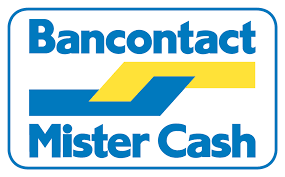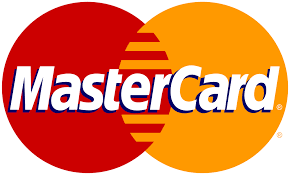

This website uses cookies so that we can provide you with the best user experience possible. Cookie information is stored in your browser and performs functions such as recognising you when you return to our website and helping our team to understand which sections of the website you find most interesting and useful.
You can adjust all of your cookie settings by navigating the tabs on the left hand side.
| Cookie Name | Accept | |
|---|---|---|
| GDPR PRO - General Data Protection Regulation - regist.dynamodance.com |



The Rumba is an increasingly popular romantic Latin dance.
This dance is slow, lyrical and romantic, offering you a great way to get more comfortable with on the dance floor. It is widely popular as a first wedding dance. Rumba is also known to be the dance that portrays love and vulnerability.
This particular Latin dance is widely acknowledged as one of the most sensuous.
The rumba is considered one of the most beautiful Latin-style dances. It is characterised by swaying, a still upper body and close contact with the partner. Although traditionally danced to slow Latin music, it is now common to dance Rumba to current and popular ballads.

Bank Transfer

Bancontact

Maestro

MasterCard

Cash in delivery
If you've ever watched ballroom dancers or seen "Dancing With the Stars," you have probably seen the Rumba in action. This theatrical dance tells a story of love and passion between a strong, male lover and a coy, teasing woman. Full of sensual movements, the Rumba is considered by many to be the sexiest of the latin dances. "Rumba" is a term that refers to a variety of dances or a "dance party." It is one of the most popular latin dances and is seen around the world at nightclubs, parties, weddings and so on.
Rumba Dance Characteristics
The Rumba is a very slow, serious, romantic dance that exudes flirtation between the partners - good chemistry makes the movements even more impactful. The dance is fun to watch, as many of its basic dance figures of the dance have a teasing theme in which the lady flirts with and then rejects her male partner, often with apparent sensual aggression. The Rumba spotlights the lady's rhythmic body movements and hip actions resulting in intense - almost steamy - scenes of passion.
Technique
the rumba technique is exactly the same for the man and woman although the woman will tend to be wearing a higher heeled shoe and therefore the technique looks even more pronounced due to the angle of elevation of her foot, also ladies are wearing a dress so their legs are exposed compared to a man wearing trousers. Cuban motion and figure eight are produced trough release of weight over a straight leg which makes the hips create a pendulum action from side to side and slightly diagonal in the direction of the next movement. Read more about rumba here or watch our free tutorial
Rumba Action
The distinctive hip movement, called Cuban Motion, is a very important element of the Rumba. These hip movements and characteristic sways of the Rumba are generated by the bending and straightening of the knees. The intensity of the Rumba is increased by sharp eye contact that is maintained between the man and the woman. The stillness of the upper body, while adding dramatic intensity, also emphasizes the strong, sensuous leg and foot movements.
The basic rhythm of the Rumba is quick-quick-slow with distinctive side-to-side hip movements. Hip movements are exaggerated, but are not generated by the hips - they are simply a result of good foot, ankle, knee and leg action. When these weight transfers are well-controlled, the hips take care of themselves.
Rumba Music and Rhythm
Rumba music is written with four beats to each measure, in 4/4 time. One full step is completed in two measures of music. The music tempo is usually about 104 to 108 beats per minute. Rumba rhythms, while once influenced by African-style music, have found their way into the country, blues, rock, and other popular music genres. The music is sometimes enhanced by homemade instruments from the kitchen such as pots, pans, and spoons for an authentic sound.
We explain to English speakers in English, and to French, Dutch and German speakers who don't speak English in French, Dutch and German respectively.
Yes, you can register alone
Yes, you can register with a partner
For carribean dances group classes i.e. Salsa, bachata, Kizomba and merengue
6courses are valid for 6 weeks,
7courses are valid for 8 weeks,
8courses are valid for 9 weeks,
9courses are valid for 10 weeks,
12courses are valid for 14 weeks
14courses are valid for 16 weeks
24courses are valid for 27 weeks
35classes are valid for 40 weeks.
For group ballroom dance classes10dances,
6courses are valid for 6 weeks,
7courses are valid for 8 weeks,
8courses are valid for 9 weeks,
9courses are valid for 10 weeks,
12courses are valid for 14 weeks
14courses are valid for 16 weeks
24courses are valid for 27 weeks
35courses are valid for 40 weeks.
For private lessons,
1Course is valid for 1 day (the day chosen for the course).
For more than one private lesson taken in a single block, a timetable will be drawn up by mutual agreement.
No, there are no classes on Easter Sunday or on the last two Sundays in December, but private lessons are available for those who wish.
Yes, we sometimes organise "special courses" during the summer holidays which are independent of the regular group courses.
So if you go on holiday in the summer you don't lose any classes.
You can still take these courses if you wish.
We're very careful about this, we like a balance between men and women for all our couples group classes. If you can enrol, in other words if the system lets you enrol, then the balance still holds.
If there is a tendency towards imbalance, the system blocks the excess gender to prevent the excess gender from registering. So if you're man or woman and you see that you can't register, just come and check from time to time to see if we can take the gender you belong to again, or send us an e-mail, and once you see that male or female can be registered again, register straight away without waiting for the risk of someone else coming to register.
No, if you register you are not obliged to start the week you have registered for. During the registration process, you will be asked to choose a start date on the calendar, which will then count as your first day.
So, for example, you could enrol in March and choose September as your start date, and that September date would then count as the first day of your course.
If you've never danced anything before, choose the beginners level.
If you've danced before, choose the level recommended by your instructor.
If you're from elsewhere, choose the beginners level or send us an e-mail.
Yes, you are well monitored. You receive regular feadback on our academic platform my.dynamodance.com
Registration is online, which saves time, but the courses are in person.